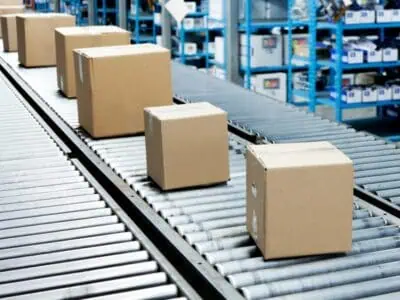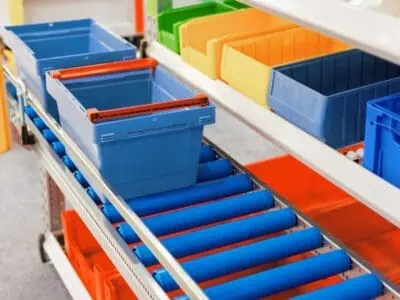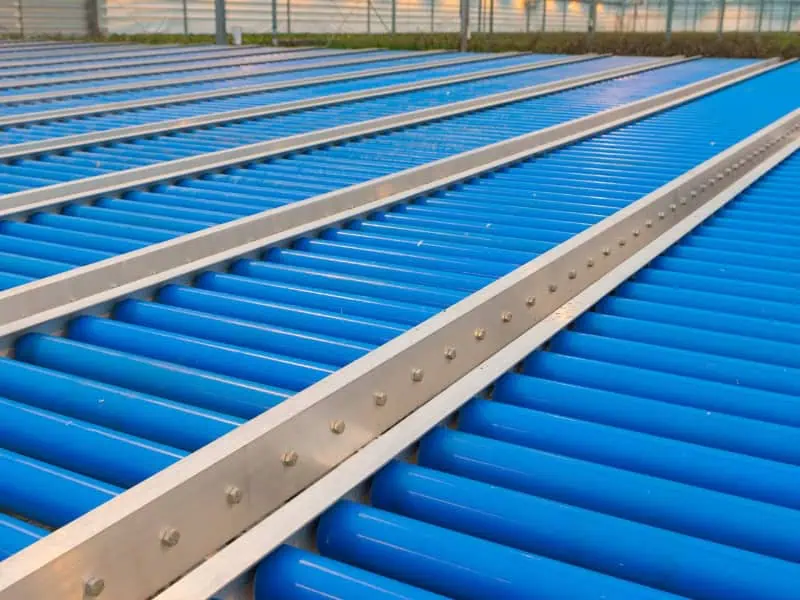In modern industrial logistics, moving hefty materials with speed and safety is non-negotiable. A mobile roller conveyor brings flexibility to operations where a fixed system won’t suffice. But when loads start tipping the scales, doubts surface — can these portable systems pull their weight?
You’re not alone in wondering how mobile conveyors cope when the job goes from lightweight cartons to full-blown pallet loads. The answer depends on what the conveyor is made of, how it’s designed, and how well it fits your site’s demands. This blog digs into how mobile roller conveyors are built, where their limits lie, and what design tweaks let them shoulder heavier duties.
What defines a mobile roller conveyor in industrial use?
Understanding what sets a mobile roller conveyor apart is essential when you’re weighing up options for heavy-duty operations. Unlike fixed systems bolted to the floor, mobile roller conveyors offer movement and modularity — but not always raw strength. Here are the core features that make mobile roller conveyors tick in factory and warehouse settings:
- Portability: Most models come with lockable castor wheels, letting you move them where needed and park them securely.
- Segmented design: These systems break into sections, making storage and transport easier than fixed conveyors.
- Adjustable layout: Height and angle can often be changed on the fly to suit the task at hand.
- Quick integration: They slot easily into loading bays, production lines, or staging areas without complex setup.
These features mean mobile conveyors are handy in dynamic workspaces where flexibility is a must. But the trade-off is often reduced strength compared to stationary setups.
Why might heavy loads challenge typical mobile conveyor setups?
While mobility is a bonus, it introduces a few engineering compromises, especially when the conveyor needs to move serious weight. Pushing lightweight units into heavy-duty territory isn’t just inefficient — it can be downright dangerous. Here are the common trouble spots when using mobile roller conveyors for heavier tasks:

- Frame stress: Lightweight frames struggle under bulk loads, especially when shifted often.
- Roller fatigue: Lower-grade rollers can warp or seize when put through repeated weight cycles.
- Casters and brakes: If wheels aren’t rated for load-bearing, the entire system becomes a tipping hazard.
- System sway: Without anchoring, a fully loaded conveyor can shift during operation, raising safety concerns.
It’s not just wear and tear you’re risking — overloading can easily breach workplace safety for plant and machinery standards, creating legal and operational headaches.
How does underestimating conveyor limits lead to breakdowns?
Ignoring load specs or stretching system limits for “just this one job” is a shortcut to equipment failure. Even if the damage isn’t immediate, repeated strain eats away at critical components and safety buffers. Here are the risks you run when pushing a conveyor past its limits:
- Sudden collapse: Frames not rated for the load may give out mid-transfer.
- Roller lock-up: Cheap rollers may deform or jam, causing movement to halt.
- Overheated bearings: Excess pressure causes heat build-up, shortening part lifespan.
- Chain reaction failure: A seized roller can cause upstream items to pile up and spill.
Below is a quick table outlining common overload outcomes and their effects:
| Overload Scenario | Likely Result | Downtime Impact |
| Frame buckling | Structural failure | High |
| Roller distortion | Conveyor jam | Medium |
| Bearing burnout | Noise and roller failure | Medium to high |
| System tipping | Load spillage and damage | High and dangerous |
To reduce downtime and avoid emergency repairs, choose systems that exceed—not just meet—your load demands. A key starting point is selecting durable mobile conveyor rollers designed for high-stress environments.
What design features allow a mobile roller conveyor to handle weight?
It’s not enough to simply want more strength — the design has to deliver. From tubing thickness to brace position, subtle features can dramatically change load tolerance. Investing in properly reinforced systems is the clearest path to safe heavy-duty handling. Here are the engineered solutions that let a mobile system punch above its weight:
- Thicker wall tubing: Reinforced steel tubes in both the frame and rollers improve weight tolerance.
- Welded joints: Less flex and movement under pressure than bolted systems.
- High-grade rollers: Precision-machined rollers with sealed bearings handle loads smoothly.
- Support stands: Adjustable legs or tripod supports reduce bowing and sway.
These features don’t just support heavier weights—they also improve safety and reduce ongoing maintenance. One downside, though, is increased upfront cost. But that’s a fair trade when you factor in reduced downtime and safer operations.
Are there mobile roller conveyor models built for durability?
Not all mobile conveyors are built the same. Some are knock-about units for light-duty use. Others are purpose-built to take punishment daily — ideal when you’re working with pallets, crates, or oversized components. Here are the types of heavy-duty mobile roller conveyors worth considering:
- Industrial steel frame models: Built with reinforced bracing and heavy-gauge steel.
- Motorised roller systems: Drive units power each roller segment for the smooth movement of heavier goods.
- Low-profile units: Easier to load by hand or machine while keeping a low centre of gravity.
- Wide-span models: Handle larger items with more support underneath.
Some models come pre-certified for safety standards and are rated specifically for your load type. That’s especially helpful when compliance is key to daily operation. When you’re choosing a conveyor belt fit for warehouse operations, starting with model ratings will save you from future headaches.
Can mobile systems match the performance of fixed conveyors?
Mobile conveyors have always been the underdogs compared to fixed systems, but that’s changing. Improvements in materials, design, and bracing mean many mobile units can now handle near-identical tasks. Here are the advancements helping mobile systems close the gap:
- Enhanced materials: Alloys and coatings that resist corrosion and reduce fatigue.
- Optimised roller layout: Shorter roller spacing for better item support.
- Quick-lock stabilisers: Instant bracing to mimic fixed conveyor stability.
- Smart features: Load sensors and automation tools to manage heavy workflows.
Of course, mobile systems won’t suit every task a fixed unit can handle. The lack of anchor points can be a con when stability is non-negotiable. Still, for most mid-range industrial jobs, mobile conveyors offer surprising bang for the buck.
Is hiring a roller conveyor a good option for short-term needs?
Not every business needs a permanent conveyor system. When the job is temporary — or still in trial — hiring a conveyor makes much more sense than purchasing outright. Here are the reasons hiring might beat buying in short-term or seasonal situations:

- Lower upfront costs: Pay only for what you use, when you use it.
- Trial flexibility: Try different setups without locking into a system.
- Included servicing: Many hire agreements include regular maintenance or fast swap-outs.
- Faster approval: Hiring equipment can skip procurement red tape.
You’ll often find hiring works best when testing workflow changes or meeting short-term demand spikes. And if you’re navigating fit-outs or temporary logistics shifts, hiring a conveyor is faster and cleaner than installing permanent systems.
Final thoughts on choosing a mobile roller conveyor for heavy-duty use
Mobile roller conveyors have come a long way in design and performance, with many now capable of handling substantial loads. The key is choosing models that match your workload without over-engineering the solution. Pay attention to construction quality, load ratings, and support features — and never push a system beyond its limits.
For tailored guidance on which models best suit your needs, you can get advice from Conveying & Hoisting Solutions — their experience in mobile material handling can help narrow down options that balance load, safety, and flexibility.




